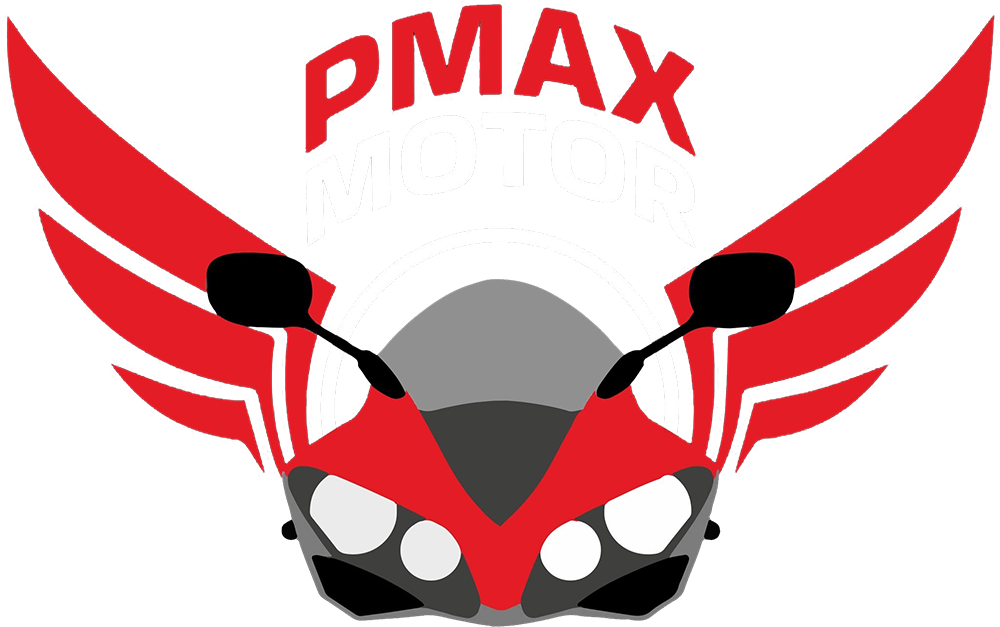No products in the cart.
Arai vs Shoei: Which Premium Helmet Reigns Supreme?
When it comes to premium motorcycle helmets, Arai and Shoei are often the first names that come up. Both brands have built their reputations over decades, offering high-performance helmets trusted by track professionals and daily riders alike.
But how do they compare in real-world use? Let’s break it down across key features, comfort, safety, and value — especially for those long rides in hot and humid afternoons in Malaysia.
Table of Contents
Toggle1. Brand Reputation & Design Philosophy
Both Arai and Shoei are Japanese manufacturers with long-standing histories. They produce their helmets in-house and are known for quality craftsmanship.
| Feature | Arai | Shoei |
|---|---|---|
| Focus | Safety-first, race-tested designs | Comfort, innovation and street usability |
| Manufacturing | Handmade, strict QC process | Precision-made with automated elements |
| Reputation | Trusted in MotoGP, F1 and endurance racing | Popular with touring, commuting and track riders |
Arai helmets stick closely to a safety-driven design, their outer shells are intentionally smooth and round to help redirect impact forces. Shoei helmets, on the other hand, often lean into creature comforts such as internal sun visors, quieter rides, and user-friendly features that make them well-suited for daily riding or long tours.
“Arai is built around the idea of sliding rather than stopping during impact, while Shoei builds for all-day wear without compromising on protection.”
2. Safety Standards & Shell Construction
Both brands exceed most safety certifications, but they approach it differently.
Arai Helmets: Usually carry Snell M2020, ECE 22.06, and SIRIM.
Shoei Helmets: Often meet Snell M2020, ECE 22.06, and DOT depending on region.
| Safety Tech | Arai | Shoei |
|---|---|---|
| Shell Type | Complex Laminate Construction (CLC) | Advanced Integrated Matrix (AIM+) |
| Inner Liner | Multi-density EPS | Dual-layer EPS |
| Chin Strap | Double D-ring | Double D-ring |
| Certification Focus | Snell, ECE | ECE, Snell |
Both brands meet or exceed Malaysian legal requirements, but it is always a good idea to check for SIRIM stickers when buying locally.
3. Comfort & Fit: Which One Sits Better?
This is where personal preference plays a bigger role than brand reputation. Everyone’s head shape is different, and the right fit can make the difference between a helmet you enjoy wearing and one you constantly want to take off.
| Feature | Arai | Shoei |
|---|---|---|
| Shell Shapes Available | 3 to 5 internal shape profiles | Typically 1–2 shape options |
| Padding Feel | Denser foam; takes longer to break in | Softer, fits snugly from the first use |
| Liner Material | Dry-Cool liner; moisture-wicking and firm | 3D Max-Dry II; plush and sweat-absorbent |
| Custom Fit Options | Removable cheek pads, replaceable head liners | Adjustable cheek pads, swappable crown liners |
Arai helmets cater well to riders who’ve struggled to find the right fit, with multiple shape offerings (like Intermediate Oval or Long Oval), they make it easier to match the helmet to your natural head shape.
Shoei, meanwhile, tends to suit a broader range of riders straight out of the box, thanks to its more neutral shape and cushioned interiors.
4. Ventilation & Noise Control
Hot and humid riding conditions, especially in city traffic, make helmet airflow a priority. No one wants to feel like their head is stuck in a rice cooker being boiled alive, so choosing a well ventilated helmet is a must.
| Feature | Arai | Shoei |
|---|---|---|
| Ventilation | Large top and chin vents, flush-fit to the shell | Precision intake/exhaust with rear stabilisers |
| Shell Shape | Rounded to reduce snagging and improve safety | Aerodynamic with fins to manage airflow |
| Noise Level | Tends to be louder due to vent design and airflow gaps | Better noise control thanks to sealed contours |
Arai designs focus more on safety than acoustics. The external vents and shell contours are great for impact deflection but let in more wind noise.
Shoei, in contrast, has refined vent paths and better sealant around padding, making it noticeably quieter at highway speeds or during long rides. If you are frequently on the road, Shoei wins in this regard.
5. Visor System & Visibility
Both Arai and Shoei offer wide, clear lines of sight for riders, but when it comes to the visor mechanism and sun protection, they take different approaches. These differences can really show themselves in day-to-day use.
| Feature | Arai | Shoei |
|---|---|---|
| Visor Change System | VAS (Variable Axis System) requires removing side pods | Tool-free quick release easier for regular changes |
| Sun Visor | Not built-in; optional external peak or dark visors only | Integrated drop-down sun visors in many models |
| Pinlock Ready | Yes | Yes |
Arai’s visor system offers a secure fit, but swapping visors means removing side covers, which isn’t the most beginner-friendly process. It can be fiddly until you get used to it, especially if you switch between clear and tinted often.
Shoei, on the other hand, uses a more convenient system, you can change visors without tools in seconds. Plus, many Shoei helmets include a built-in sun visor, which is handy for sudden changes in lighting conditions like tunnels or sunrise rides.
6. Price & Durability in the Malaysian Market
Helmet pricing in Malaysia can vary based on where it’s purchased, whether it’s officially imported, and if it carries SIRIM approval. Generally, both Arai and Shoei sit on the premium end of the scale, but with good reason! Long-term comfort, quality materials, and safety features are all worth it.
| Brand | Entry-Level Price (RM) | Mid-Range (RM) | High-End Model (RM) |
|---|---|---|---|
| Arai | Around RM2,000 | RM3,000–RM4,000 | RX-7V RM4,500+ |
| Shoei | Around RM2,200 | RM3,000–RM4,200 | X-Fifteen RM4,800+ |
For those looking for more budget-friendly yet certified alternatives, brands like KYT, NHK, LS2, and ZEUS offer decent features such as good airflow, acceptable padding, and SIRIM-certified options at lower price points.
However, they’re more suited for casual or city use and don’t match the all-day comfort, build finesse, or safety tech of Arai and Shoei.
7. Use Case: Touring, Commuting, or Racing?
How and where you ride makes a big difference when choosing between Arai and Shoei.
- Arai helmets are often chosen for track days, sport riding, or high-speed touring, where safety takes top priority. Their smooth shell design and energy dispersion features are ideal for impact management, even if it means a bit more wind noise or a heavier build.
- Shoei helmets are ideal for long-distance touring, city commuting, and all-weather riding. They lean into everyday comfort, offering better noise insulation, sun visor integration, and easier fit adjustments, especially if you wear your helmet for hours at a time.
8. Pros & Cons Summary
Now, we talked a lot about Arai and Shoei but the details can be all over the place. So, here’s a side-by-side breakdown of the strengths and weaknesses of each brand, to help you make a more informed choice:
| Brand | Pros | Cons |
|---|---|---|
| Arai |
|
|
Shoei |
|
|
Picking the Right Premium Helmet For You
When comparing Arai vs Shoei, there’s no single winner — both brands offer outstanding protection, comfort, and build quality. It really depends on your riding style, comfort preferences and how much convenience matters.
At Pmax Motor, we stock both Shoei and Arai helmets, alongside other riding gear built for Malaysia’s heat, humidity, traffic and unpredictable conditions. Our team can help match you with a helmet that fits just right, for your head, your ride, and your budget.
You don’t have to pick a side. But you do need a helmet that fits, feels good, and keeps you safe every single day.
Frequently Asked Questions About Arai vs Shoei
Which Brand Offers Better Spare Parts Availability in Malaysia?
Shoei generally has wider spare part availability locally, especially for visors and liners, thanks to better dealer coverage and official service centres.
Are Arai Helmets More Suitable for Round Head Shapes?
Yes. Arai offers multiple internal shape options including Round Oval, which can fit certain Asian head shapes better than Shoei’s more neutral fit.
Do Shoei Helmets Come With a Warranty in Malaysia?
Official Shoei helmets sold in Malaysia typically include a 5-year warranty, provided they’re bought from authorised dealers with SIRIM approval.
Which Brand Handles Tropical Heat Better?
While both perform well, Shoei helmets tend to have more refined ventilation channels that offer slightly better airflow during hot city riding.
Can You Install Bluetooth Systems Easily in Either Helmet?
Shoei helmets usually have pre-designed speaker cut-outs in their liners, making them more plug-and-play with most comms systems than Arai.
Which Helmet Brand Holds Its Resale Value Better?
Shoei helmets tend to have a higher resale value locally due to their brand recognition and broader usage across various riding styles.
Tags: Motorcycle helmet



